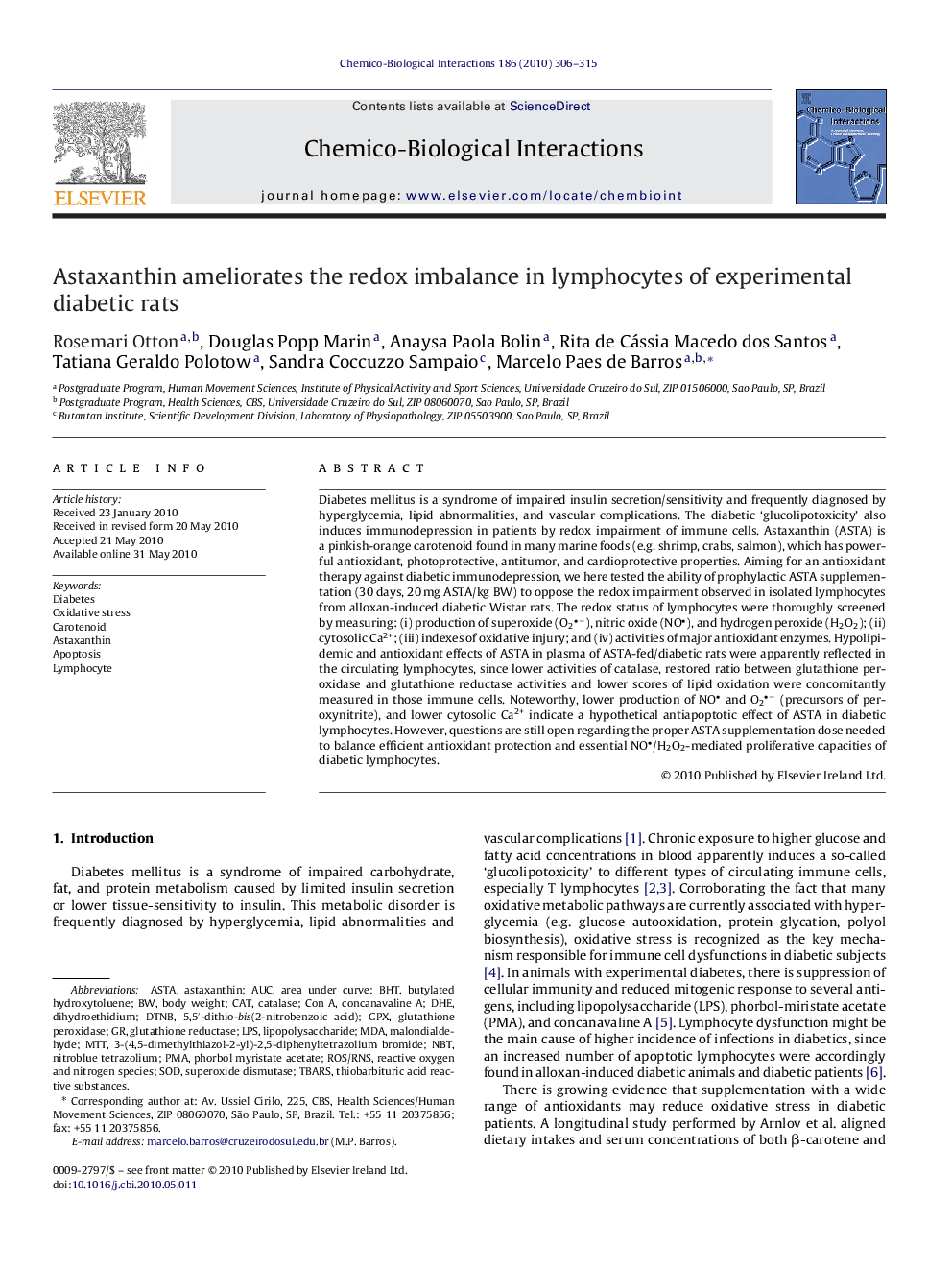| Article ID | Journal | Published Year | Pages | File Type |
|---|---|---|---|---|
| 2581101 | Chemico-Biological Interactions | 2010 | 10 Pages |
Diabetes mellitus is a syndrome of impaired insulin secretion/sensitivity and frequently diagnosed by hyperglycemia, lipid abnormalities, and vascular complications. The diabetic ‘glucolipotoxicity’ also induces immunodepression in patients by redox impairment of immune cells. Astaxanthin (ASTA) is a pinkish-orange carotenoid found in many marine foods (e.g. shrimp, crabs, salmon), which has powerful antioxidant, photoprotective, antitumor, and cardioprotective properties. Aiming for an antioxidant therapy against diabetic immunodepression, we here tested the ability of prophylactic ASTA supplementation (30 days, 20 mg ASTA/kg BW) to oppose the redox impairment observed in isolated lymphocytes from alloxan-induced diabetic Wistar rats. The redox status of lymphocytes were thoroughly screened by measuring: (i) production of superoxide (O2−), nitric oxide (NO), and hydrogen peroxide (H2O2); (ii) cytosolic Ca2+; (iii) indexes of oxidative injury; and (iv) activities of major antioxidant enzymes. Hypolipidemic and antioxidant effects of ASTA in plasma of ASTA-fed/diabetic rats were apparently reflected in the circulating lymphocytes, since lower activities of catalase, restored ratio between glutathione peroxidase and glutathione reductase activities and lower scores of lipid oxidation were concomitantly measured in those immune cells. Noteworthy, lower production of NO and O2− (precursors of peroxynitrite), and lower cytosolic Ca2+ indicate a hypothetical antiapoptotic effect of ASTA in diabetic lymphocytes. However, questions are still open regarding the proper ASTA supplementation dose needed to balance efficient antioxidant protection and essential NO/H2O2-mediated proliferative capacities of diabetic lymphocytes.
